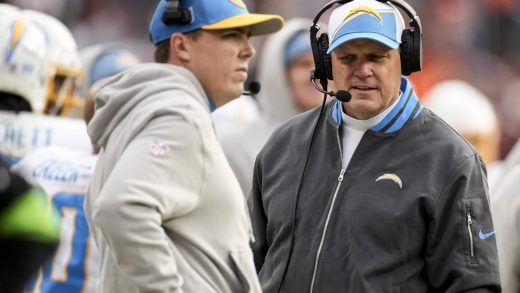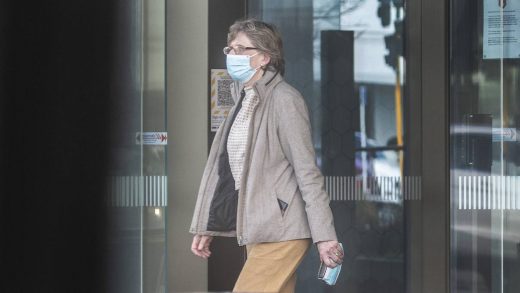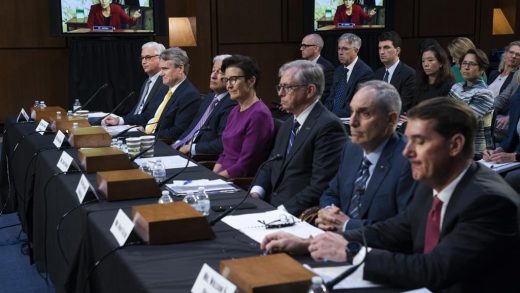
BEIRUT (AP) — A young Palestinian journalist whose coverage of the widespread destruction and humanitarian crisis in the Gaza Strip went viral now watches the war from afar in Lebanon.
Twenty-two-year-old Plestia Alaqad was just over a year out of university with a journalism degree when she found herself in the middle of a war zone. She donned a blue press helmet and vest to interview families in refugee camps and hospitals, posting the videos to Instagram.
“I can’t just look at what’s happening without doing anything,” she told The Associated Press in an interview Tuesday in Beirut.
From Gaza City where she lived, Alaqad was among a handful of young journalists and media workers sharing what they saw on social media, with outside journalists unable to access the Palestinian enclave. She now has over 4.5 million followers on Instagram.
Alaqad landed in Lebanon last month to pursue a master’s degree in media studies at the American University of Beirut after being awarded a scholarship named after iconic Palestinian-American journalist Shireen Abu Akleh who was killed in 2022 while reporting on an Israeli military raid in the occupied West Bank.
Today she spends her days on the tranquil tree-lined AUB campus or in the cafes of Beirut’s Hamra Street, but her mind remains in Gaza.
“You’re a journalist and a Palestinian human witnessing it,” Alaqad told the AP, sitting in the patio of one of those cafes, wearing a black and white traditional keffiyeh scarf. Balancing those two roles “was the difficult part,” she said.
She had already lived through three wars in Gaza by the time she graduated university, but the war that began on Oct. 7 was on a different scale.
The Israeli aerial bombardment and ground offensive triggered by the deadly Hamas-led attack on southern Israel – which killed some 1,200 people and took another 250 hostage – has killed over 40,000 Palestinians in Gaza, according to the Health Ministry. The war has caused vast destruction across the territory, with entire neighborhoods wiped out and critical infrastructure heavily damaged.
“It used to break my heart seeing kids standing in lines for hours just to buy bread or to fill tanks with water,” Alaqad said. “Instead of those kids being at a school, they’re standing in line to do these chores.”
By covering the impact of the humanitarian crisis as a result of Israel’s blockade of Gaza and aid agencies’ struggles to reach the civilian population, she hoped that it would counter what she saw as the “dehumanization” of Palestinians in the wider media and show that they are more than “just numbers.”
“I used to connect with the people, and get to know them on a deeper level so people can remember their names, their smiles, and who they are,” Alaqad said.
Reporting while tending to her own and her family’s well-being and safety was often complicated.
Electricity and telecom cuts at times made charging equipment and uploading material a challenge. Sometimes she would have to put work on hold to secure basic items, including food.
“I would think ‘what a downgrade’ — why am I spending three hours of my day just to search for eggs?” she said.
During almost two months covering the war, Alaqad said she was displaced several times, moving between houses and hospital in Gaza City before heading south to stay with relatives in Khan Younis.
One night, her mother told her that her uncle in Australia had secured them temporary visas to evacuate, and that the family was put on a list to leave through the Rafah border crossing with Egypt in several hours.
Alaqad said she was reluctant to leave, but felt that continuing to cover the war would be an eventual death sentence, and so she left for Australia in late November.
The United Nations and human rights organizations have been alarmed by the large number of journalists killed in Gaza since Oct. 7. Committee to Protect Journalists says it has confirmed that least 111 Palestinian journalists and media workers in Gaza have been killed.
In March, three dozen leaders at news organizations around the world, including the AP, signed a letter expressing solidarity with journalists in the tiny enclave, calling for their safety and freedom to report there.
“You either get forcefully displaced out of your country, or eventually you’d get targeted and killed,” Alaqad said. “I felt at one point that we will all stay in Gaza and just get killed and the story will never go out to the world.”
Since she left, more of Gaza has been levelled to the ground in Israeli military operations. The vast majority of Gaza’s population of 2.3 million people have been displaced and no longer have access to the Rafah crossing. Large-scale polio vaccinations began Sunday in response to an outbreak of the rare disease as humanitarian organizations warn that lack of aid and worsening living conditions pose major public health risks.
Efforts for a cease-fire and the release of Israeli hostages mediated by Qatar, Egypt, and the United States remain unsuccessful.
Alaqad said witnessing the destruction of schools and universities in Gaza has given even more importance to her in furthering her education. She hopes to return to report on Gaza’s reconstruction once a cease-fire agreement is reached and on the Palestinians’ ongoing advocacy for self-determination.
“You can leave Gaza, but I don’t think Gaza can ever leave you,” she said.


